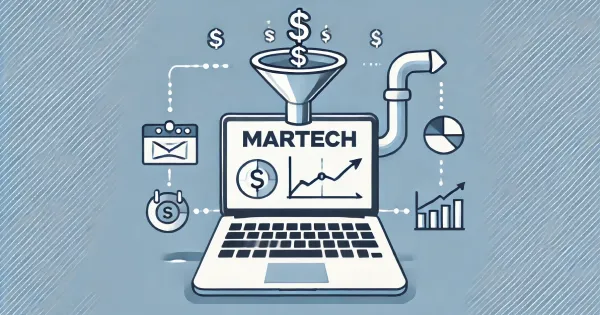Ads vs Subscriptions: Which Model is Best?

Generating revenue is a critical decision for content creators and businesses - should they pursue an advertising-based model or adopt a subscription approach? This choice significantly influences a company's financial performance, growth prospects, and customer engagement levels.
The advertising model, deriving income by displaying ads to users, has long underpinned many businesses spanning traditional print media to online giants like Google and Facebook. Conversely, the subscription model requires consumers to pay recurring fees for continued access to products or services - an approach that has seen notable successes in the digital age with companies such as Netflix and Spotify.
Choosing the optimal revenue strategy impacts more than just profitability; it also shapes the user experience and brand perception. This article provides an in-depth comparison of both models, offering nuanced insights to help businesses determine which approach best aligns with their long-term objectives.
The Advertising Model

The advertising model thrives on the maxim that "content is free"—at least to the user. Businesses that employ this model offer their primary services or content at no upfront cost, aiming to attract a broad audience. Revenue is generated by selling advertisements that are either displayed within the content itself or integrated into the overall user experience.
Key Benefits
- Scalability: One of the foremost advantages of the advertising model is its scalability. Businesses can potentially reach millions of users without a direct cost barrier, facilitating rapid audience growth. As viewership increases, so does ad exposure, which in turn, escalates revenue potential.
- Broad Market Reach: Advertising allows businesses to tap into a wide demographic by leveraging the mass appeal of free access. This model is particularly advantageous in markets where consumers are reluctant to pay upfront fees for content or services.
Major Drawbacks
- Dependence on Large User Bases: The viability of the ad model hinges on attracting a high volume of traffic. This dependency creates a high entry barrier for new businesses and compels existing ones to continuously innovate to keep their audience engaged.
- Privacy Concerns and Regulatory Challenges: With increasing awareness of data privacy, consumers are becoming more skeptical of ads and less tolerant of invasive marketing practices. Moreover, stringent regulations such as GDPR in Europe have imposed tighter controls around data usage, presenting a significant challenge to ad-based revenue strategies.
Real-World Examples
Companies like Google and Facebook have mastered the advertising model, generating billions in revenue while offering free services to users. Their success lies in sophisticated algorithms that personalize ads based on user data, albeit not without controversy over privacy concerns.
Continuing from the overview of the advertising model, let's explore the subscription model, which has become increasingly popular in various industries, especially in media and software.
The Subscription Model

The subscription model is based on the premise that consumers pay a recurring fee to gain continuous access to a product or service. This model has seen a surge in popularity as businesses and consumers alike favor predictable pricing and consistent service delivery.
Key Benefits
- Predictable Revenue: One of the greatest advantages of the subscription model is the predictable, recurring revenue it generates. This predictability allows businesses to better plan and invest in future growth initiatives, as they have a clearer understanding of income streams.
- Better Customer Retention: Subscriptions encourage longer-term customer relationships. By requiring customers to opt-in for ongoing service, companies can focus on retaining existing subscribers through enhanced service offerings and customer service, leading to higher lifetime value per customer.
Major Drawbacks
- Difficulty in Building a Subscriber Base: One major challenge with the subscription model is the initial difficulty in convincing consumers to pay a recurring fee. This model typically requires a strong value proposition and significant marketing efforts to build a stable subscriber base.
- Higher Churn Rates: While customer retention is a highlight, managing churn rates is a critical aspect. Subscribers can cancel their subscriptions at any time, which can lead to significant fluctuations in revenue. Companies need to continually engage their customers and innovate their offerings to reduce churn.
Examples of Successful Subscription-Based Companies
Netflix and Spotify are prime examples of successful subscription-based companies. Netflix transitioned from a DVD rental service to streaming, leveraging a broad library of content to retain subscribers. Spotify offers tiered subscriptions, including a free ad-supported level that serves as a funnel to its premium plans.
Comparative Analysis

Financial Sustainability
- Advertising Model: This model often requires continuous investment in marketing and audience acquisition to maintain high traffic levels essential for advertising revenue. It can be volatile, as revenue fluctuates with market trends and consumer behavior.
- Subscription Model: Offers more financial stability once a substantial subscriber base is established, as revenues are more predictable and less susceptible to external market shocks.
User Experience
- Advertising Model: The need to integrate ads can sometimes degrade the user experience, leading to potential user dissatisfaction if ads are too intrusive or if there is a perception of privacy invasion.
- Subscription Model: Typically provides a cleaner, ad-free experience that can lead to higher user satisfaction and engagement, fostering a stronger sense of loyalty and lower turnover.
Market Penetration Strategies
- Advertising Model: Effective in early market penetration as it lowers the barrier to entry for users, allowing rapid scaling and user base growth, which is critical in industries like social media and digital platforms.
- Subscription Model: Requires more targeted market penetration strategies, focusing on specific customer segments willing to pay a premium for value. This is often seen in specialized software services or niche content providers.
Long-term Viability
- Advertising Model: While effective in the short term, the long-term viability can be challenged by changes in consumer attitudes towards ads and tightening regulations around data privacy.
- Subscription Model: If managed well, it offers significant long-term benefits through customer retention and the potential for upselling additional services or content tiers.
Case Studies

Google (Advertising)
Google not only harnesses ad revenue through search, but also through YouTube and its AdSense network, creating an extensive ecosystem where ads are tailored to user behavior across multiple platforms. This integration maximizes user engagement and ad effectiveness, contributing to Google's dominance in online advertising.
Netflix (Subscription)
Netflix’s strategy includes significant investment in original content to differentiate itself from competitors. This content strategy not only helps in retaining subscribers, but also in justifying periodic price increases that enhance revenue without a corresponding rise in user churn.
Facebook (Advertising)
Facebook exemplifies the advertising model adapted to the social media context. It leverages vast amounts of user data to offer highly targeted advertising, driving revenue growth. However, it faces growing scrutiny over data privacy practices and the impact of misinformation, highlighting potential risks associated with this model.
The New York Times (Subscription)
Transitioning from a traditional newspaper to a digital-first entity, The New York Times has successfully implemented a subscription model that capitalizes on high-quality journalism combined with digital convenience. This shift has resulted in a dramatic increase in digital subscribers, offsetting the decline in print circulation and advertising revenue.
Spotify (Subscription)
Spotify has transformed the music industry with its subscription model, offering unlimited access to a vast library of songs and podcasts for a monthly fee. This strategy has allowed Spotify to thrive amid declines in traditional music sales and piracy, by providing both free and premium subscription options. The approach has significantly broadened its user base and revenue, capitalizing on the shift towards streaming as a preferred music access method.
Final Thoughts
The choice between an advertising model and a subscription model is a complex one, requiring a nuanced understanding of both the business's objectives and its operational context. While the advertising model offers rapid scalability and a wide market reach, it comes with challenges related to user privacy and engagement. On the other hand, the subscription model promises a more stable revenue stream and greater customer loyalty, but it requires a substantial initial investment in content and user acquisition.
As the digital world evolves and consumer preferences shift, businesses may need to adapt or hybridize these models to stay competitive. Integrating elements from both models, such as offering a basic ad-supported service alongside premium subscription options, can provide a balanced approach to revenue generation.
Key Takeaways
| Criteria | Advertising Model | Subscription Model |
|---|---|---|
| Revenue | Variable based on ads and market. | Stable from consistent subscriber fees. |
| User Experience | Potentially intrusive ads. | Ad-free, smoother experience. |
| Scalability | Easy to grow user base with free access. | Growth tied to converting paying subscribers. |
| Customer Loyalty | Lower, as engagement is ad-driven. | Higher, with a direct financial relationship. |
| Market Entry | Quick audience build-up due to free content. | Harder, needs upfront value to attract fees. |
| Privacy Concerns | Higher, due to reliance on data for targeted ads. | Lower, less data used for ads. |
| Ideal Content | General, broad-appeal content. | Exclusive, premium content. |
| Risk | Higher, influenced by external advertising spend. | Lower, based on stable customer payments. |
| Typical Examples | Google, Facebook. | Netflix, The New York Times. |







